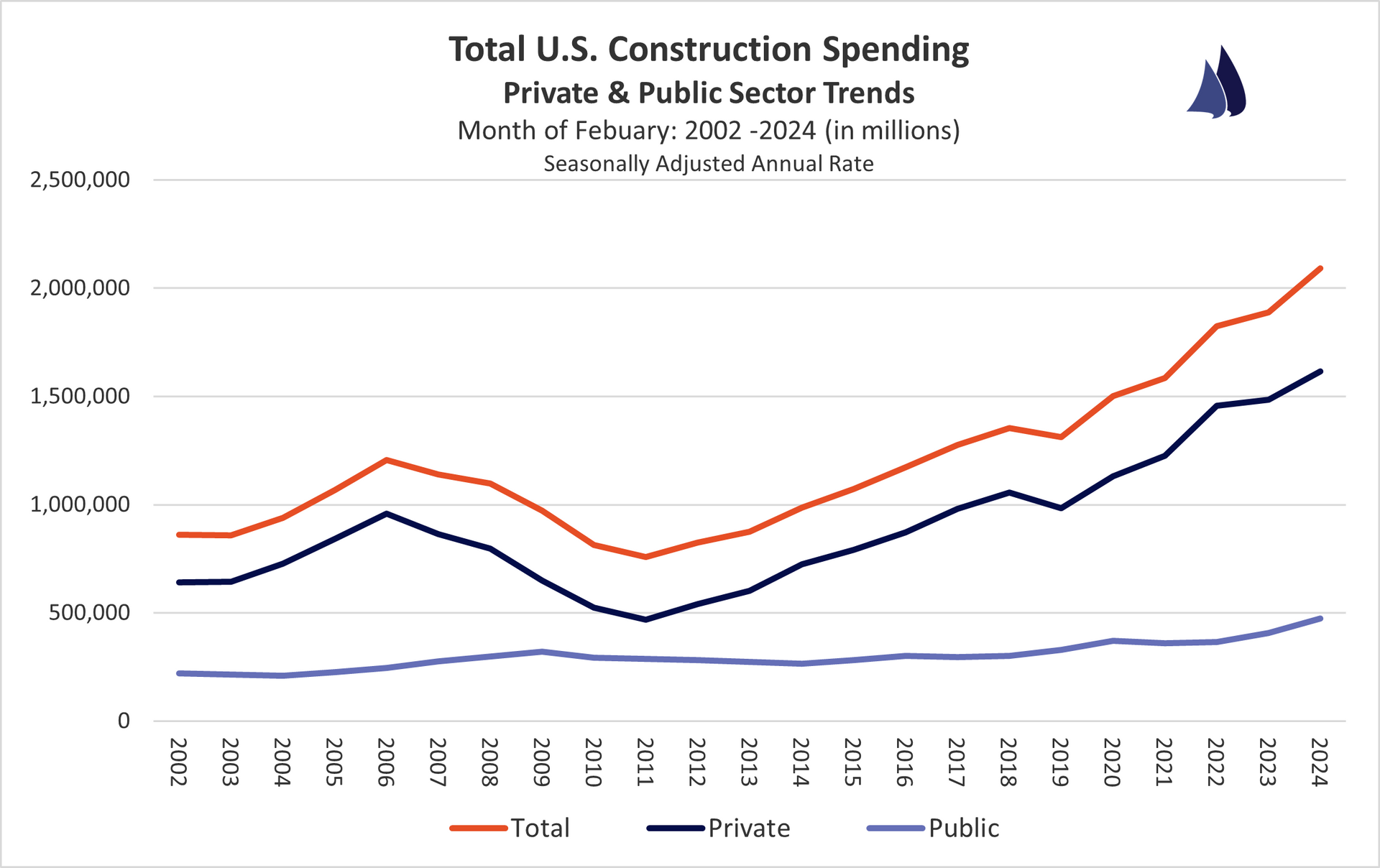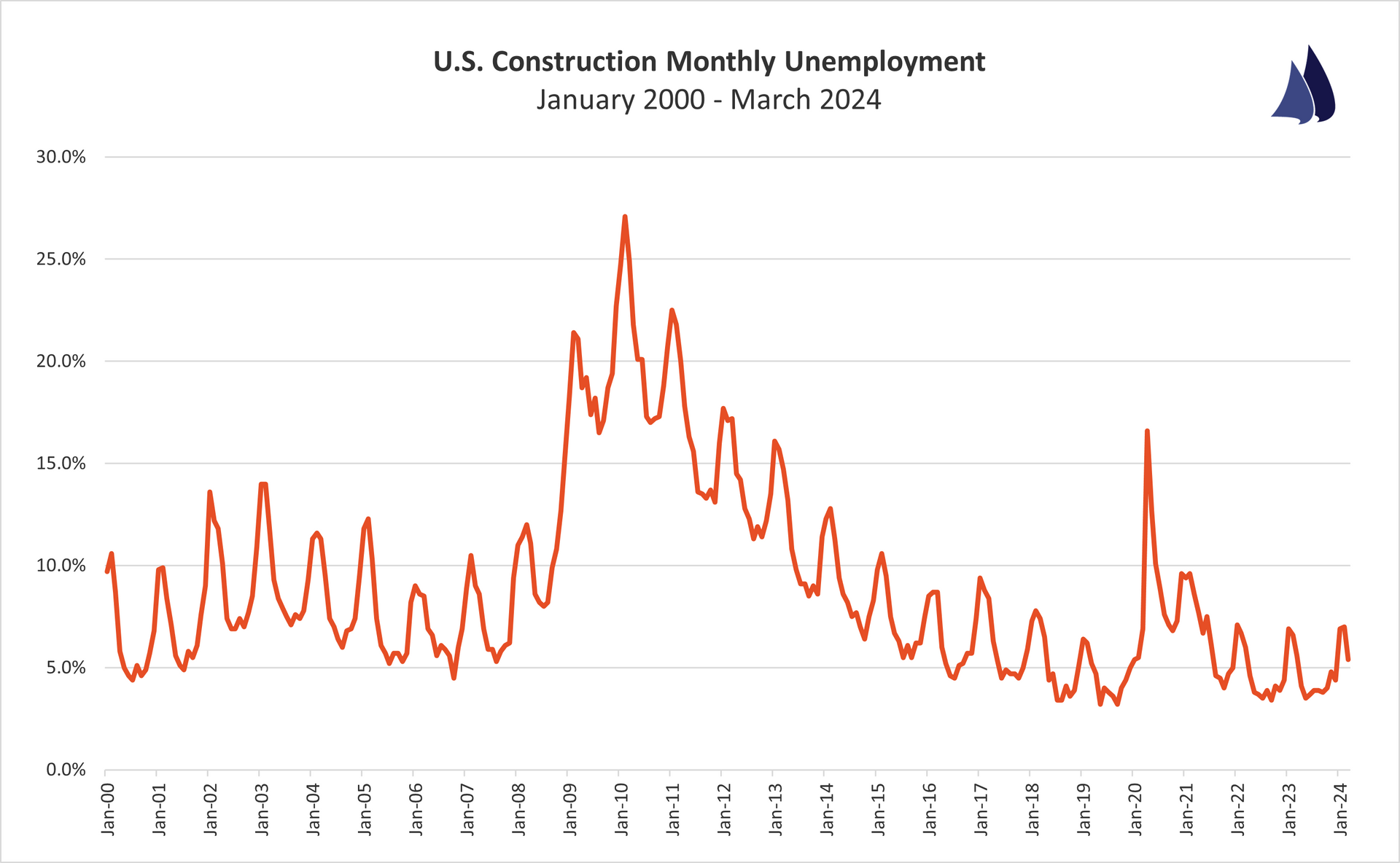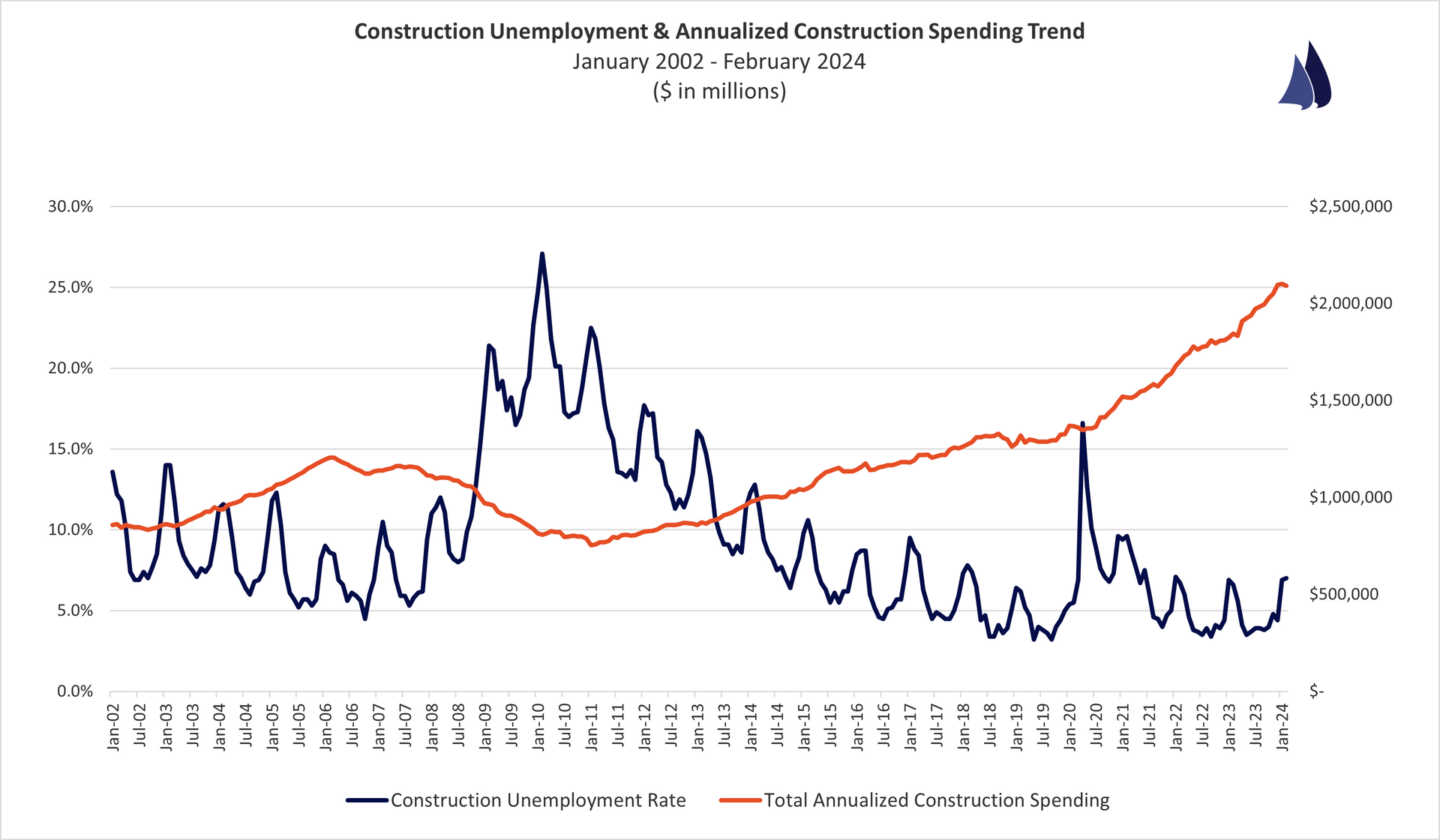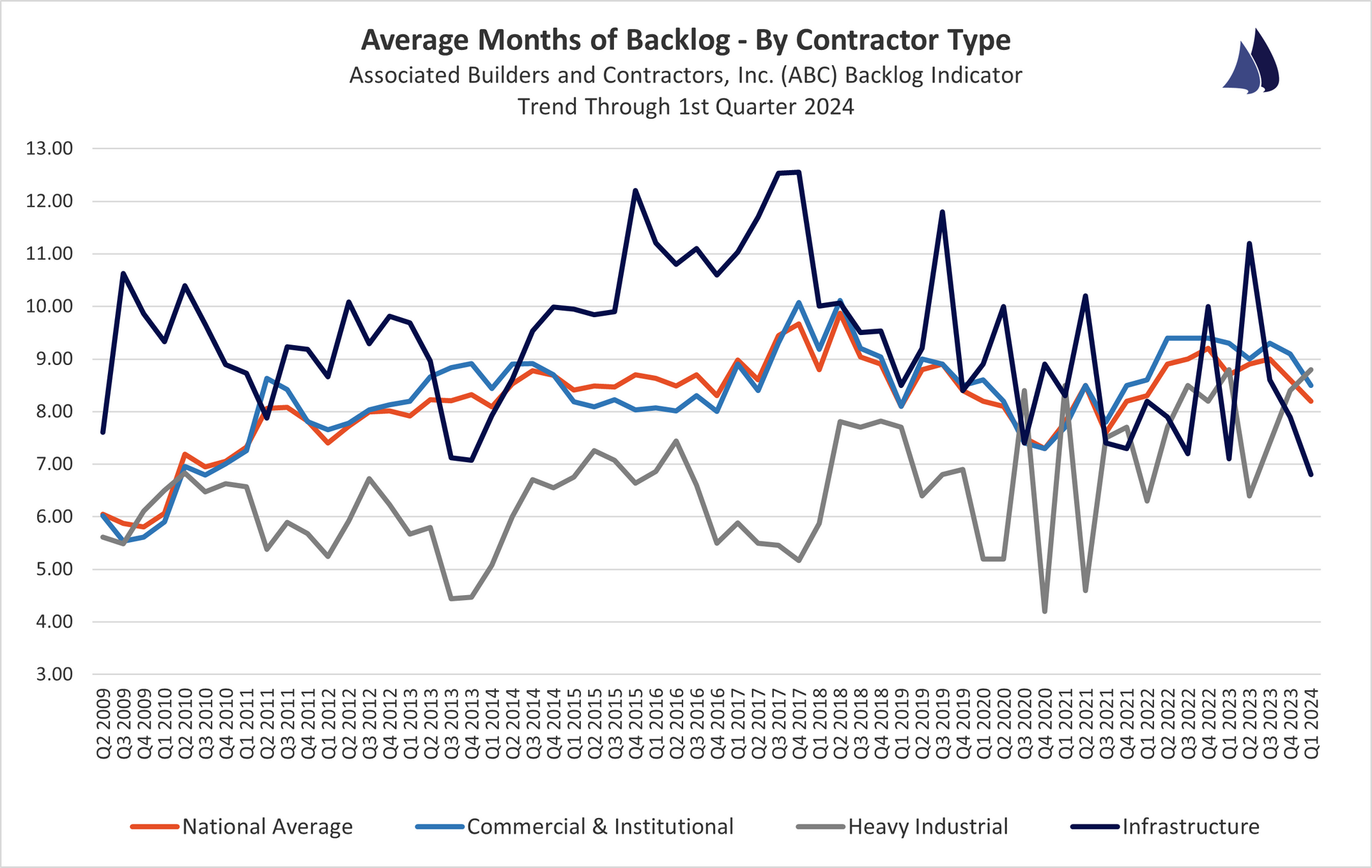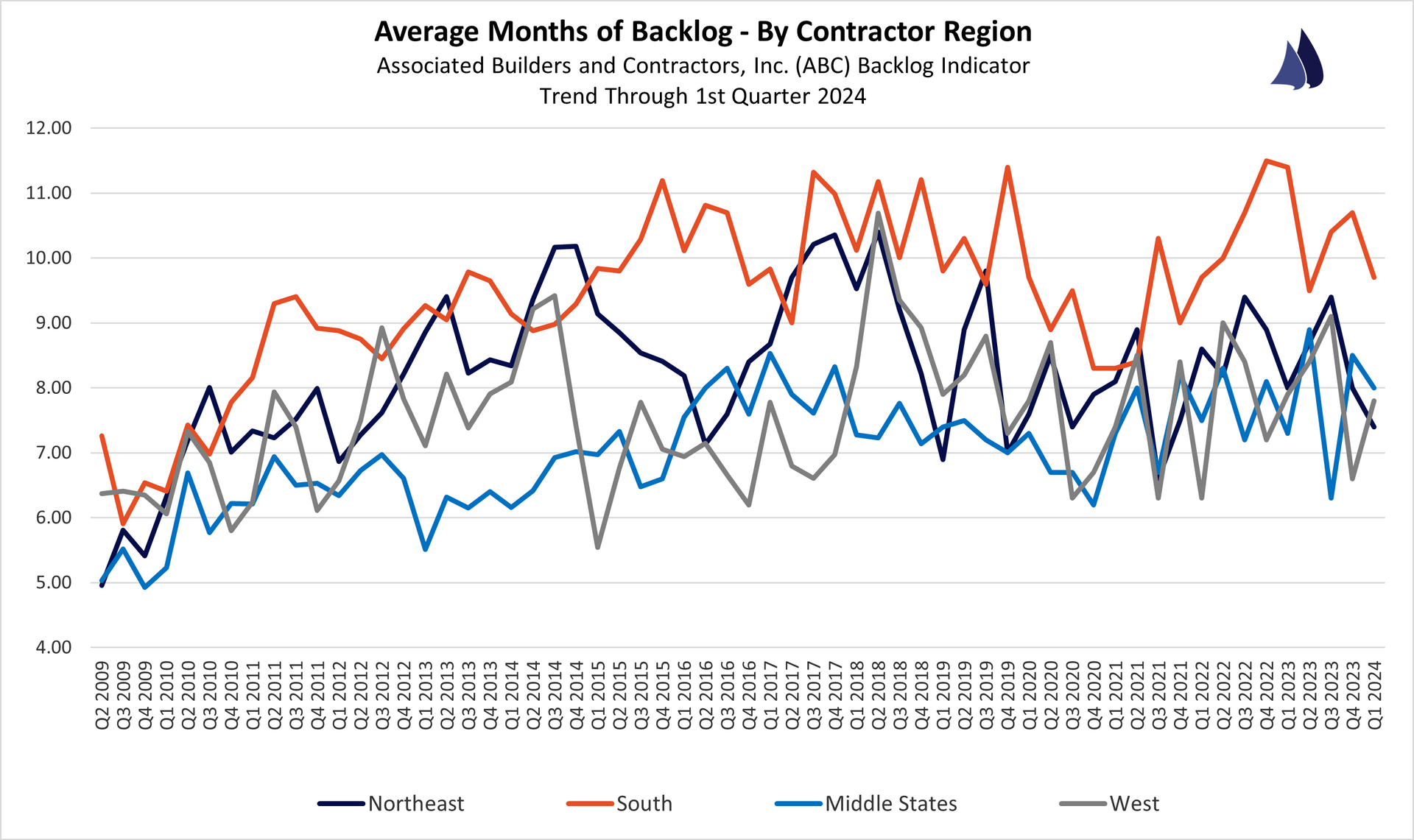Construction Economics Hub
Catalyst Construction Economics Hub
Know where the industry is.Know where it's headed.
Data Which Reflects Where the Industry Is Today
Construction Spending
U.S. Census Bureau - Construction Spending
Year-To-Date Annual Total - Seasonally Adjusted Annual Rate
February 2024 vs. February 2023
All Construction Spending: +10.7%
Public Construction: +16.8%
Private Construction: +9.0%
Residential Construction: +6.5%
Non-Residential Construction: +14.2%
Quick Analysis:
Spending growth continues to be driven by the non-residential and public segments. The February 2024 data reflects a healthy increase over the same month of 2023, but growth has slowed a bit - due primarily to the cooling of the robust growth in the manufacturing sector we saw for most of 2023.
Notable Increases/Decreases By Sector:
- Manufacturing - Spending is up 31.9% versus 2023
- Highway & Street - Spending is up 18.5% versus 2023
- New Single-Family Residential - Spending is up 17.2% versus 2023
- Educational - Spending is up 16.5% versus 2023
- Water Supply - Spending is up 15.1% versus 2023
- Sewage - Spending is up 12.4% versus 2023
https://www.census.gov/construction/c30/c30index.html
Construction Costs
ENR Construction Cost Index
April 2024 vs. April 2023
Total Construction Costs: +2.3%
Building Cost Index: +3.8%
Material Cost Index: +6.2%
Skilled Labor Costs: +2.6%
Common Labor Costs: +1.2%
Quick Analysis:
The pace of material cost increases versus the prior year has ticked up slightly in early 2024 but remained flat in April versus March. That said, inflation across materials is certainly well below what the industry experienced in 2022. There was slight softening in labor costs (both skilled and common) in April versus March.
http://enr.construction.com/economics/
Construction Employment
U.S. Bureau of Labor Statistics
March 2024
Construction Unemployment: 5.4%
Quick Analysis:
The industry's unemployment rate for the month of March was 5.4%, down from 7% in February. Overall, unemployment remains on par with the industry's unemployment rate reported for February of 2023. Needless to say, the labor market remains tight.
http://data.bls.gov/timeseries/LNU04032231?data_tool=XGtable
Contractor Backlogs
ABC Backlog Indicator
March 2024 (1st Quarter)
National Avg. Backlog: 8.2 months
Backlog By Region:
South: 9.7 months | Northeast: 7.4 months | Middle States: 8.0 months | West: 7.8 months
Backlog By Company Revenue:
<$30 Million: 7.7 months | $30-$50 Million : 8.2 months | $50-$100 Million: 9.7 months | >$100 Million: 10.1 months
Backlog By Industry:
Commercial & Institutional: 8.5 months | Heavy Industrial: 8.8 months | Infrastructure: 6.8 months
Quick Analysis:
Backlogs contracted slightly in Q1 2024 versus Q4 2023 for all firms doing over $30 million a year in revenue (firms under $30 million reported a slight uptick in backlogs). Further, every industry segment reported lower backlogs in March 2024 versus December 2023.
http://www.abc.org/NewsMedia/ConstructionEconomics/ConstructionBacklogIndicator/
Data Which Reflects Where the Industry Is Headed
Architectural Billings
AIA Architectural Billings Index
March 2024
Architectural Billings Index (ABI): 43.6
New Design Contract Index (DCI): 50.0
Commercial/Industrial ABI: 42.9
Institutional ABI: 49.9
Multi-Family Residential ABI: 44.2
Mixed Practice ABI: 48.3
South Region ABI: 45.3
West Region ABI: 47.6
Midwest Region ABI: 45.2
Northeast Region ABI: 46.0
New Project Inquiry Index (NPII): 54.9
Quick Analysis:
Index value > 50 represents that architects have reported more activity for that particular metric than the prior month. These metrics are leading indicators as the ABI reflects projects in design that will enter the construction phase in 9 to 12 months and the NPII reflects new project demand from owners to potentially enter the design phase.
The March AIA data reflects the eighth consecutive month of monthly declines in architectural activity - the longest period of monthly declines since 2010. High interest rates paired with elevated construction costs are the primary driver in less projects entering the design phase. There remains an underlying demand for new project design services which is reflected in the New Project Inquiry Index reading of 54.9. Overall, this data could very likely mean decreased construction starts and spending levels as we progress further into 2024.
http://new.aia.org/press-releases
Get This Data Delivered to Your Inbox Each Month
Simplify Your Bonding Process
About Catalyst
Catalyst Surety Partners, LLC is an independent insurance agency that specializes in providing surety bonds.
We leverage our team's deep surety knowledge along with our agency's relationships with a wide array of surety carriers to help companies improve their bonding capabilities.
Our Locations

